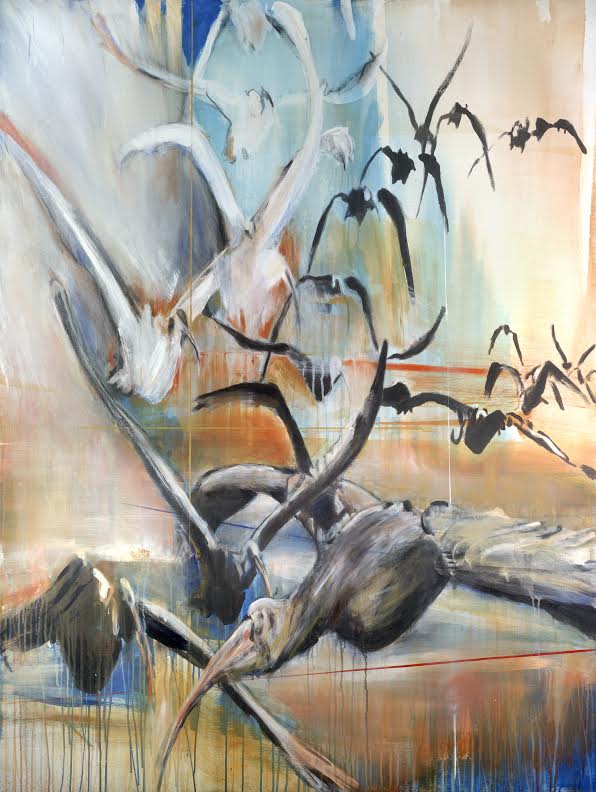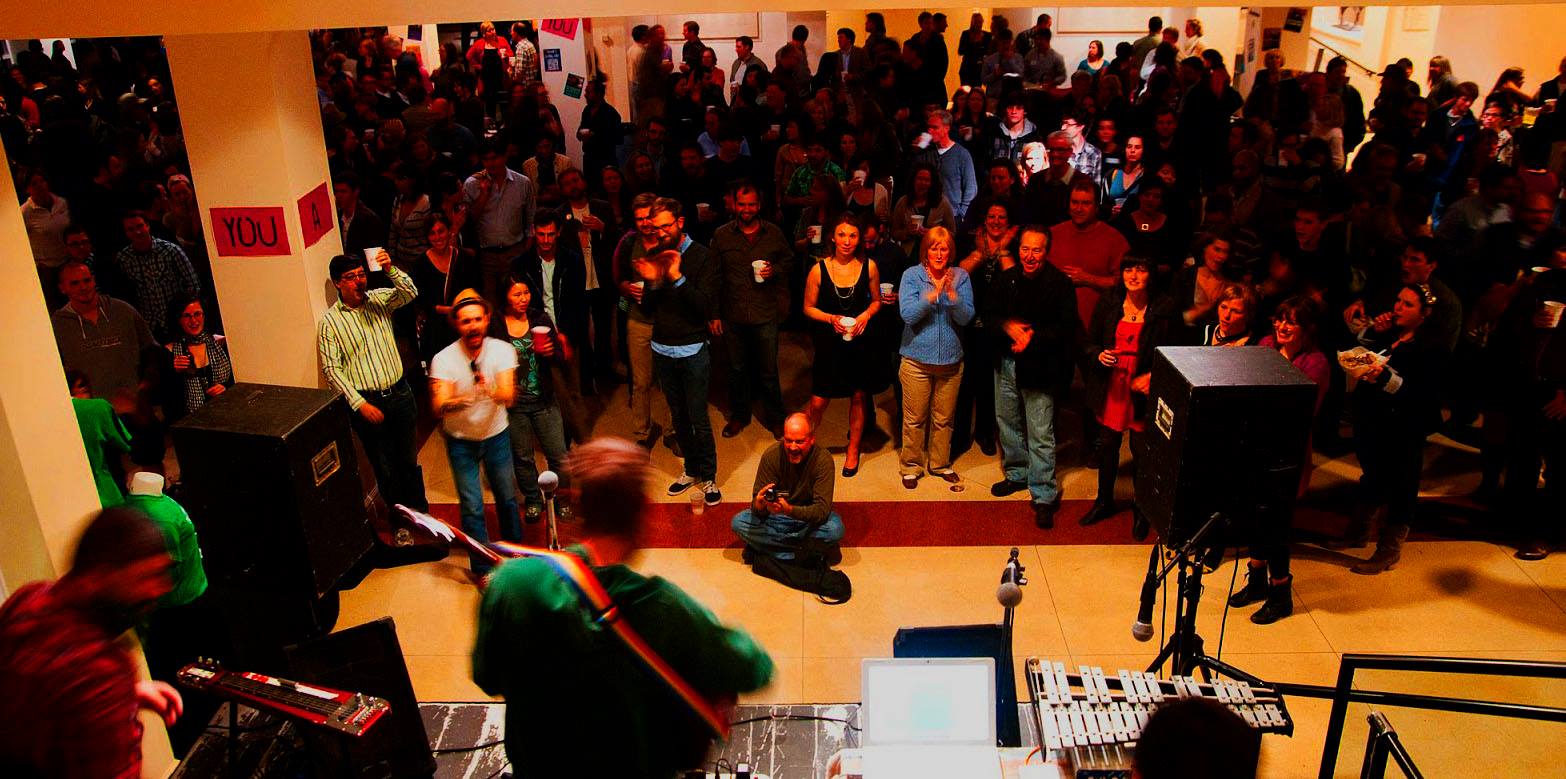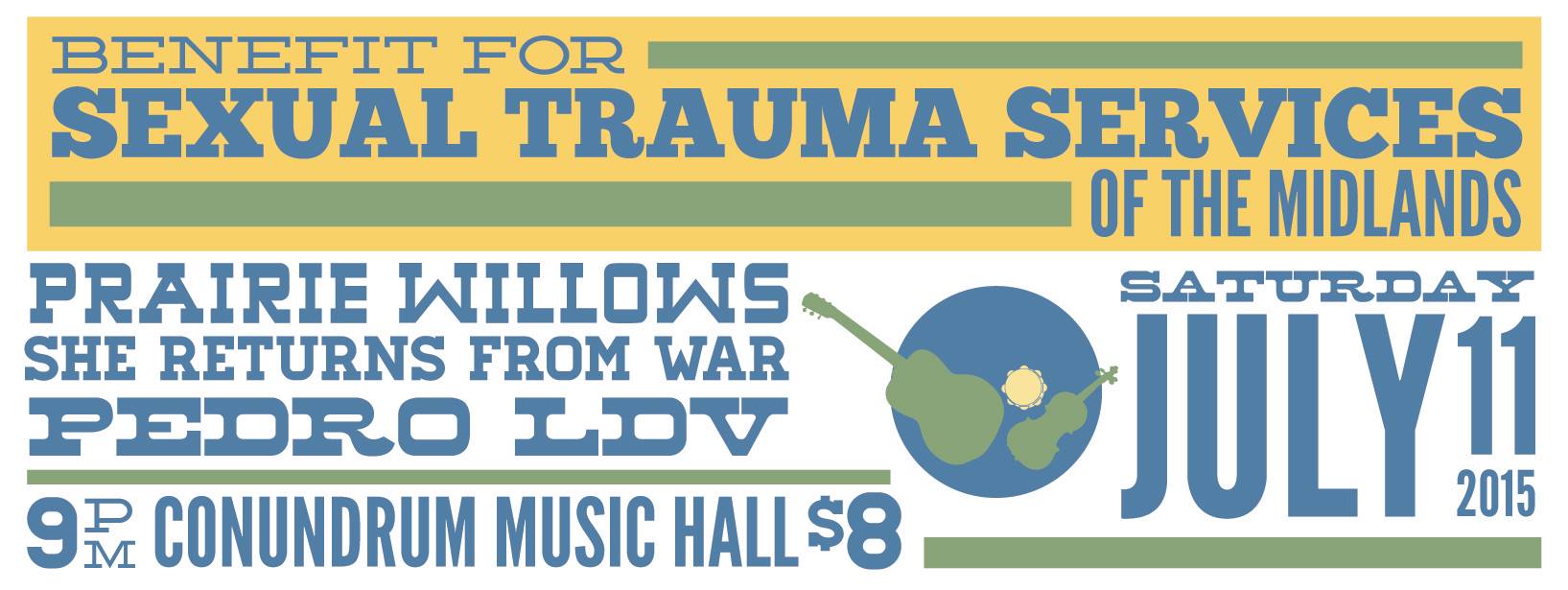 Theatre review by Melissa Swick Ellington
Theatre review by Melissa Swick Ellington
A NiA production in collaboration with Columbia Children’s Theatre is a sure sign of clever family entertainment, and the current offering of Br’er Rabbit will delight audiences of all ages. Written by Darion McCloud, H. Loretta Brown, and Heather McCue, this version of the trickster’s tale celebrates music and rhythm, vibrant characters, audience interplay, and cunning creativity. Recognizing the complex legacy of Br’er Rabbit in his director’s notes, McCloud envisions an approach to the folk character that “really does belong to all of us.” With this production, NiA and CCT present an interpretation of the tale which delivers “that upshot of joy.” (Further observations on the history surrounding the “Br’er” tradition are explored in the accompanying interview by young Kat Bjorn.)
A master storyteller himself, the magnetic performer McCloud is perfectly cast in the storytelling role of Anansi the spider. McCloud’s interaction with the young audience members seems natural and genuine. Even his dynamic facial expressions foster an atmosphere of encouraging warmth. As the crafty and appealing Br’er Rabbit, Bonita Peeples plays the resourceful trickster with quick-witted glee. Peeples draws in the audience with admirable skill, made evident by children’s eagerness to cover for Br’er Rabbit when the other animals realize they have been fooled by the rascal. At the performance attended by this reviewer, kids insisted “She’s nowhere!” and “Run for your life!” in their efforts to help the beloved main character. (An added treat: audiences even get to appreciate her glorious singing voice!)
The entire ensemble delivers first rate performances which include McCue as the brainy and sassy Br’er Tiger, Charlie Goodrich as Br’er Bear, Michael Clark as Br’er Lion, and Jimmy Wall as Mr. Man and Tar Baby. Supported by percussionist Don Laurin Johnson, this talented group weaves a captivating web of magical sounds and sights. Moments of aural symphony encourage audience members to clap along, and in the case of my preschooler, offer an enthusiastic “Yeah!” At certain performances, alternate actors appear in the roles of Br’er Lion (Clark Wallace), Br’er Bear (Brown), and Mr. Man/Tar Baby (Julian Deleon and Goodrich).
An innovative approach to physical theatricality pervades the production. From the beguiling staging of the opening spider sequence to the finely tuned collaboration of Peeples and McCue in the big chase through the rousing group dance in the final scene, these performers embody characters and story with boldness and flair. Adults will particularly enjoy the pop culture references (check out that Scarecrow!) and wordplay such as the “arugula” jokes, while the kids relish the opportunity to offer ideas on sticky substances for the Tar Baby (peanut butter and jelly, gum, melted candy, and marshmallows were popular choices).
McCloud provides creative vision as director, costumer, and sound designer, and Wall conjures effective visuals as makeup designer. Costumes evoke animal identity while also inviting children to imagine. McCue (company manager), Crystal Aldamuy (stage manager), and Jim Litzinger (sound and light technician) contribute to a cohesive production team.
As one youngster declared early in the performance, “I knew it was going to be funny!” Columbia families have come to anticipate high quality theatre at CCT, and the collaboration with NiA to produce Br’er Rabbit is an enjoyable success. Treat yourself to the rollicking good time of Br’er Rabbit, and you will likely agree with my preschool son’s post-show exultation: “That was FUN!”

Rising Second Grader Interviews Cast of Columbia Children’s Theatre Br’er Rabbit by Kat Bjorn (with some help from her Papa, Arik)
Kat’s Papa: Hey folks, technically this part isn’t a review of Columbia Children’s Theatre’s current production, Br’er Rabbit, but seriously, you have to see this show—even adults without kids. You see, there’s a Scarecrow Formerly Known as Prince; Br’er Lions & Tigers & Bears, oh my!; plus more Zip-a-Dee-Doo-Da than you can shake a briar patch at. Also—
Kat Bjorn: Papa, shhh!! I’m starting the interview now.
Papa: Okay, time to go be scribe. Seriously, see this show!
Kat Bjorn: What does “Br’er” mean?
Darion McCloud (Anansi the Storyteller): That’s a good question. It means “brother,” but it can be used for boys and girls—all humanity, really.
Heather McCue (Br’er Tiger): Lady tigers thank you!
Kat Bjorn: (pointing at Br’er Lion) Are you a lady?
Michael Clark (Br’er Lion): Are you referring to my fabulous wig—I mean mane?
Kat Bjorn: Take off your mane.
Br’er Lion: Don’t mind if I do; it’s getting hot in here.
Jerry Stevenson, CCT Artistic Director: He’s not even a natural blonde.
Kat Bjorn: If “Br’er” means “brother,” and they’re brothers, how come Br’er Lion, Br’er Tiger and Br’er Bear are always trying to kill Br’er Rabbit?
Br’er Tiger: Do you have any brothers and sisters? I have a sister, and we fight like cats and dogs.
Anansi the Storyteller: Also, let’s face it, they’re predators. And rabbits taste good.
Kat Bjorn: The characters, right? People don’t really eat people.
Anansi the Storyteller: Correct. NiA Company does not endorse cannibalism.
Jim Litzinger, CCT Managing Director: Nor does Columbia Children’s Theatre!
Kat Bjorn: Next question. My Papa says the Br’er Rabbit tales were sometimes codes for African-Americans a long time ago. What does this mean, and what’s a code?
Anansi the Storyteller: A code is when people say one thing but mean something else. And your Papa is right. During slavery, black people were treated really badly. They used these stories to feel better. Br’er Rabbit was code for black people; Br’er Fox and the other Br’er predators were the slaveholders.
Br’er Tiger: It had a lot to do with power
Anansi the Storyteller: Right. They had to speak in code or risk getting punished.
Kat Bjorn: Why does Br’er Rabbit carry a knapsack in the show poster but not in the play?
Anansi the Storyteller: Um, director’s choice, I guess.
Papa whispers to Kat.
Kat Bjorn: Did it have anything to do with budget?
Jerry Stevenson, CCT Artistic Director: Knapsacks definitely would have broken the bank.
Kat Bjorn: I’m pretty good at crafts. I could make a knapsack pretty cheap.
Anansi the Storyteller: We’ll have to hire you next time as a financial consultant.
Kat Bjorn: Excuse me, Mr. Scarecrow, can you tell us about “Purple Rain”?
Anansi the Storyteller: Actually, that’s the Actor Formerly Known as Scarecrow. The scarecrow’s real name is Button-Bright. It’s named after a character in L. Frank Baum’s Sky Island. The Prince mask is another story altogether.
Kat Bjorn: In the book we’re reading at home, Uncle Remus is the storyteller. But in this play, it’s Anansi the Spider. Why?
Anansi the Storyteller: Actually, many of the Br’er Rabbit stories were originally African folktales. And in Africa, Anansi the Spider narrates the tales.
Br’er Lion: Well, I never got there, did I—thanks to Br’er Rabbit! So we’ll never know!
Kat Bjorn: How do you prepare to act like an animal character?
Bonita Peeples (Br’er Rabbit): I use my imagination! I try to think childlike. And rehearsal is a great place for me to practice my imagination!
Kat Bjorn: What was your favorite part of the show?
Jimmy Wall (Tar Baby): When they’re planning to cook Br’er Rabbit.
Br’er Rabbit: When Br’er Rabbit interrupts Sister Moon in the shower.
Br’er Lion: The Tar Baby story.
Kat Bjorn: Final question: How come Br’er Rabbit always outsmarts Br’ers Lion, Tiger & Bear, but isn’t smart enough to realize Tar Baby isn’t really alive?
Br’er Rabbit: You can’t be smart about everything—but I did get myself out of that jam, didn’t I?
Bre’er Rabbit runs June 12-21 with performances at the following dates and times: Friday, June 12 at 7 p.m.; Saturday, June 13 at 10:30 a.m., 2 p.m. & 7 p.m.; Sunday, June 14 at 3 p.m.; Saturday, June 20 at 10:30 a.m., 2 p.m. & 7 p.m.; Sunday, June 21 at 3 p.m. Tickets are $10 for adult and children 3 and up. Seniors & Military ticket prices are $8. Tickets are $5 for the Saturday 7 p.m. performance. The Columbia Children’s Theatre is located at the Second Level of Richland Mall, 3400 Forest Drive (corner of Beltline and Forest Drive). Enter the Second Level parking garage walkway and park in Level 2-L for easy access. Call 691.4548 for more information or to reserve tickets for groups. To learn more about Columbia Children’s Theatre , visit http://columbiachildrenstheatre.com/ .































 Theatre review by Melissa Swick Ellington
Theatre review by Melissa Swick Ellington
